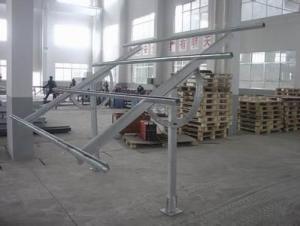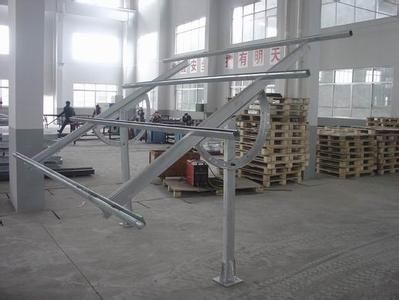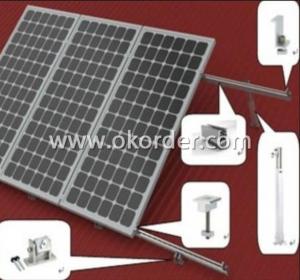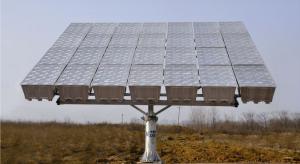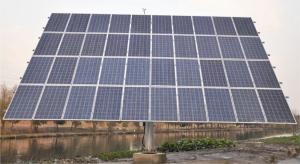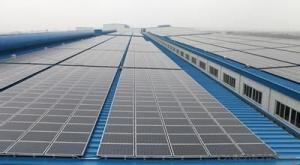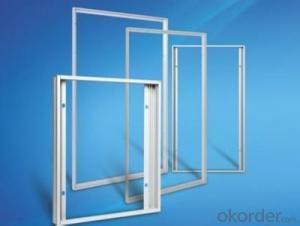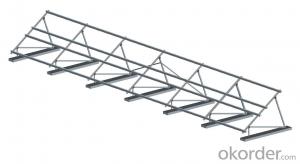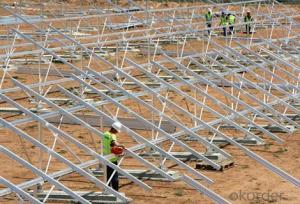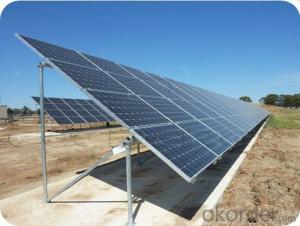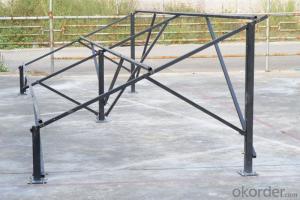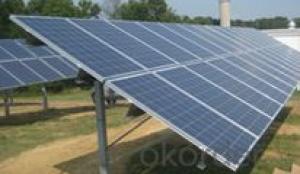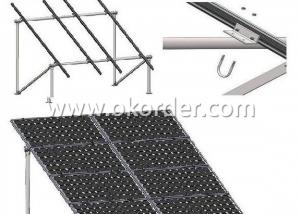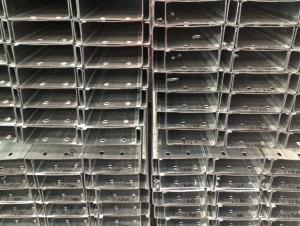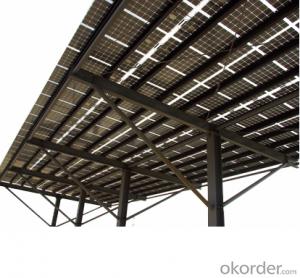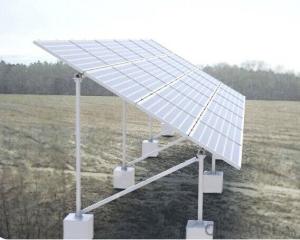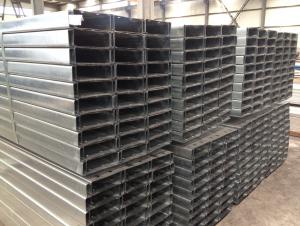Metal Roof Solar Mounting Systems - TT-EC-F45 Solar Panel Mounting System
- Loading Port:
- China Main Port
- Payment Terms:
- TT OR LC
- Min Order Qty:
- -
- Supply Capability:
- -
OKorder Service Pledge
OKorder Financial Service
You Might Also Like
PV Mounting brackets are special solar photovoltaic systemfor placing, installing, fixing the solar panel design. Generally materials arealuminum, steel structure, stainless steel. PV mounting products at groundmounting system, flat roof mounting system, adjustable angle roof rack system,inclined roof rack system, column bracket system.
The Ground Mounting System including concret basement sysytemand steel pipe sysytem, Titanergy provides total solution for flat or pitchedroof with patent products.On the basis of the given project data, specificnational standards and guidelines, Titanergy will calculate the completestructural analysis and create a complete project plan to make sure reliablestructural safety.We provide high quality HDG steel and aluminum products forthe ground mounting sysytem,witch can make sure the security and durability ofthe project.
Features and Advantages
n The rail bracket is easy to install, just use simple tools(eg, Allen wrench) can be easily installed. Rail connecting member can freelyadjust the length, the stent may be pre-installed on the roof, and thenappropriately adjusted according to the size of the solar panel.
n The combination of strong, aluminum rails and card blocks fora variety of venues and a variety of materials roofs (such as metal, ceramicand other kinds of tile surface)
n Component compatibility, and rail can meet PV modules fromdifferent manufacturers.
n accuracy, the length of the rail to the nearest millimeter,the construction process, not because of the length is too long or too shortfor the second cut.
n flexible assembly, rail hooks can adjust the spacing modulearray and tile has been installed successfully address the uneven roofconstruction led to difficult problems.
n design standards, product design and development process instrict accordance with GB, the German standards and other internationalstandards to ensure products reach the world advanced level.
n Quality assurance, the stent main material is high-qualityaluminum and stainless steel, effectively prevent corrosion of oxidation.Products can be recycled, reducing environmental pollution.
n Carried out strictly according to the current specificnational standards
n Perfectly optimized components and complete structuralanalysis for the sysytem
n High corrosion resisitance ensure the stability and highdurability
n Total test and certification make sure the high quality ofthe products
n Maximum pre-assembled in factory,quick mounting onsite,timesaving
10-year durability warranty
Technical Data
n Design Period:25 years
n Installation Site: Open area
n Array Angle:10°~60°
n ModuleType:Framed or unframed
n Material:Q235B,Al 6063-T5,Al 6005-T5,StainlessSteel A2-70
n Coating:HDG/Anodised
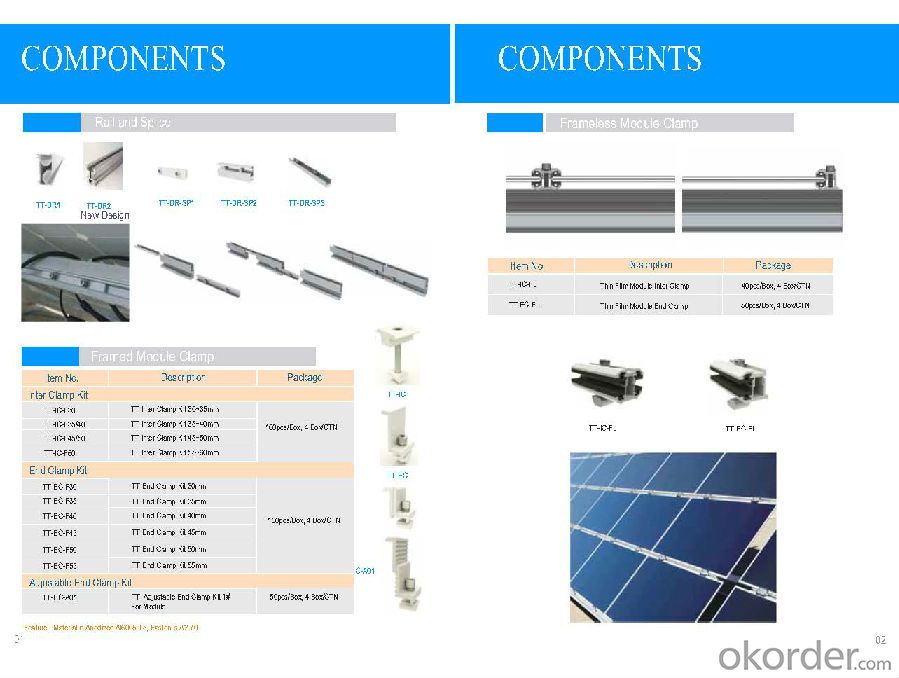
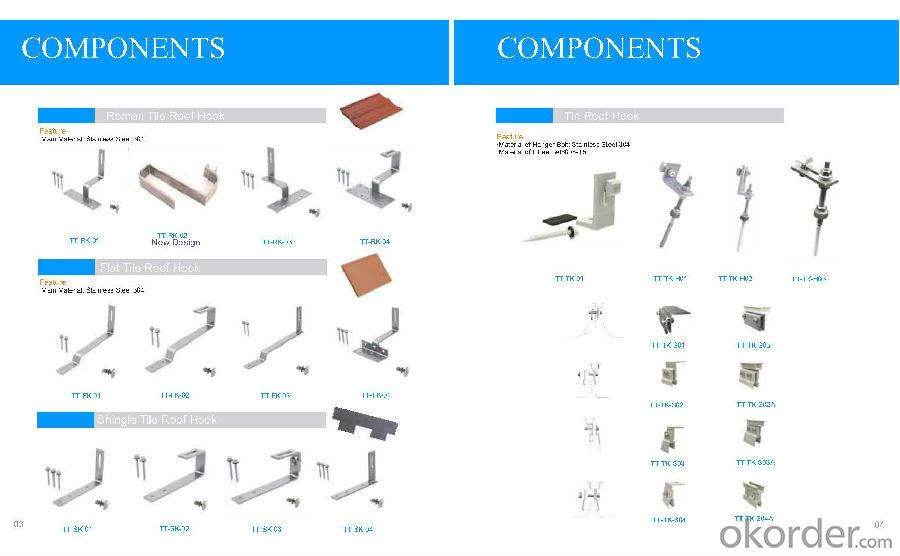
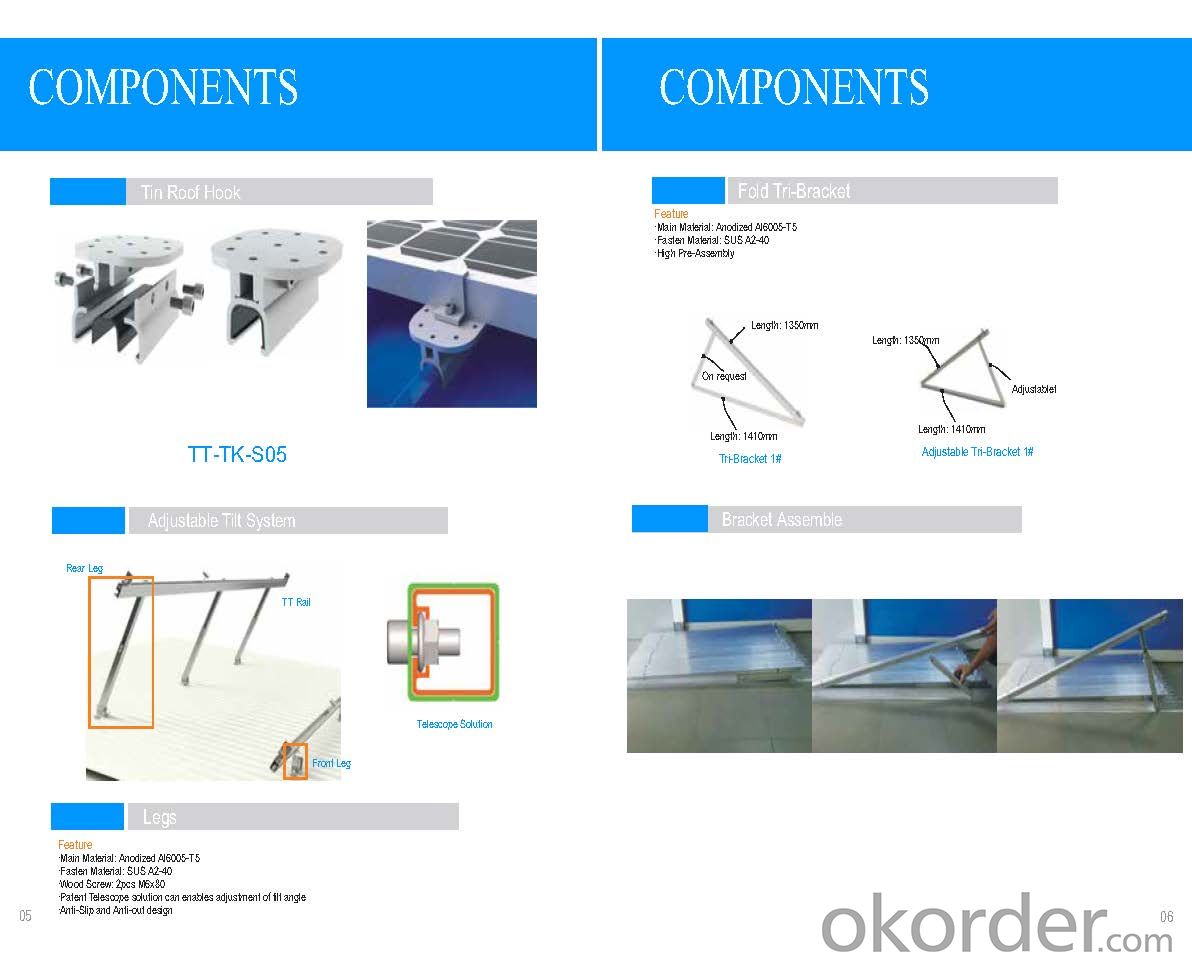
- Q: Can a solar mounting system be installed on a floating platform or water surface?
- Yes, a solar mounting system can be installed on a floating platform or water surface. These systems, known as floating solar or floating photovoltaic (PV) systems, are designed to harness solar energy on bodies of water. They typically consist of solar panels mounted on a buoyant structure that floats on the water's surface. This innovative approach to solar installation offers several benefits, such as utilizing unused water surfaces, reducing evaporation, and increasing energy production due to water cooling.
- Q: Can solar mounting systems be installed on rooftops with antennas?
- Yes, solar mounting systems can be installed on rooftops with antennas. However, it is important to ensure proper coordination and placement of the solar panels and antennas to avoid any interference or obstruction of the antenna signals.
- Q: Can solar mounting systems be used for commercial-scale installations?
- Yes, solar mounting systems can definitely be used for commercial-scale installations. In fact, they are commonly used in such applications. Solar mounting systems provide the necessary support and stability for large arrays of solar panels, ensuring optimal positioning and efficient energy generation. These systems are designed to withstand various weather conditions and are adjustable to accommodate different roof or ground installations.
- Q: Can a solar mounting system be used with solar awnings?
- Yes, a solar mounting system can be used with solar awnings. The solar mounting system provides the necessary support and stability for installing solar panels on various surfaces, including awnings. This allows for the efficient utilization of available space and harnessing solar energy effectively.
- Q: What are the main components of a solar mounting system?
- The main components of a solar mounting system typically include the solar panels, racking or mounting structures, roof attachments or ground-mount frames, and the necessary hardware and fasteners. These components work together to securely and efficiently mount the solar panels in the desired location, whether it is on a roof or on the ground, ensuring optimal sunlight exposure and stability.
- Q: Can a solar mounting system be used in areas with solar incentives for community centers?
- Yes, a solar mounting system can definitely be used in areas with solar incentives for community centers. In fact, community centers are ideal locations for solar installations as they typically have ample roof space or open areas that can accommodate solar panels. By utilizing a solar mounting system, community centers can take advantage of the solar incentives available in their area, reduce their energy costs, and contribute to a more sustainable future.
- Q: Are there any government incentives or rebates available for solar mounting system installations?
- Yes, there are government incentives and rebates available for solar mounting system installations in many countries. These incentives can vary depending on the location and government policies, but they often include tax credits, grants, or feed-in tariffs to encourage the adoption of renewable energy systems. It is advisable to check with local government agencies or consult with a solar installation professional to explore the specific incentives available in a particular area.
- Q: Are there any specific requirements for installing a solar mounting system on a flat concrete roof?
- Yes, there are specific requirements for installing a solar mounting system on a flat concrete roof. Firstly, the roof should be structurally capable of supporting the additional weight of the solar panels and mounting system. It is necessary to conduct a structural analysis to ensure the roof can withstand the added load. Additionally, the roof should have enough unobstructed space to accommodate the size and layout of the solar array. It is important to evaluate the orientation and shading of the roof to maximize solar exposure. Finally, the installation should comply with local building codes and regulations, including obtaining necessary permits and ensuring proper waterproofing and sealing to prevent any leakage or damage to the roof.
- Q: Can a solar mounting system be used for solar water heaters or thermal systems?
- Yes, a solar mounting system can be used for solar water heaters or thermal systems. The mounting system provides a stable and secure platform for the solar panels or thermal collectors, helping to maximize their efficiency and effectiveness in harnessing solar energy for water heating or thermal purposes.
- Q: Can a solar mounting system be used in conjunction with a battery storage system?
- Yes, a solar mounting system can be used in conjunction with a battery storage system. The solar mounting system is responsible for securing and supporting the solar panels, while the battery storage system stores excess energy generated by the panels for later use.
Send your message to us
Metal Roof Solar Mounting Systems - TT-EC-F45 Solar Panel Mounting System
- Loading Port:
- China Main Port
- Payment Terms:
- TT OR LC
- Min Order Qty:
- -
- Supply Capability:
- -
OKorder Service Pledge
OKorder Financial Service
Similar products
Hot products
Hot Searches
Related keywords
